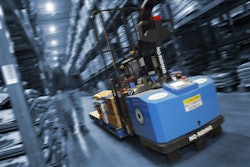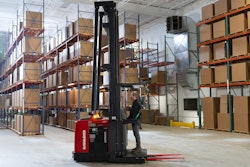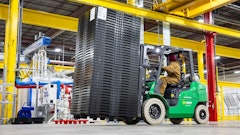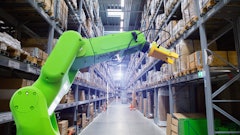Holland, MI: Few automated guided vehicle (AGV) manufacturers have in-depth knowledge of compliance requirements for food and beverage industries. AGV systems must meet the requirements for intermediate storage of food products.
AGVs must also take expiration dates of final products into account and organize warehouse shelves accordingly resulting in optimal food conservation at every point in the workflow.
In the current issue of International Food Safety & Quality Network, manufacturing journalist TR Cutler notes, “Food and beverage industry requirements of automated guided vehicles are unique. AGV’s must be equipped to handle palletized and unit loads of beer, soft drinks, cereals, candy, snack foods, in-process ingredients, packaging materials in manufacturing, cross-docking, warehousing and trailer loading environments.”
AGV systems in the industry support various storage types for pallets, racks and bins including block stacking, deep lane stacking or warehouse racking.
The ability to modify the construction of an AGV is vital to ensure that it is compliant with stringent hygiene regulations, such as stainless steel frames, usage of fully sealed components and encapsulated steer drive units to allow complete cleanliness of the AGV’s.
Food and beverage applications:
Automated guided vehicles are implemented in any intermediate stage of food & beverage supply chains from trailer unloading, raw materials receiving. and transport to and from AS/RS to supply to processing lines, handling of finished products and trailer loading.
AGV specific applications in food and beverage include:
- Food transport in less operator-friendly environments (cold storage and freezers);
- Transport of fish tubs in salty and oily areas;
- Storage of cheese racks and transport to ripening rooms controlled via recipe management software;
- Fully automatic handling of beer pallets from automatic warehouse to dock using automatic trailer loading vehicles.
Effective warehouse management system software will store each transport the system has performed along with batch ID, time stamp, source and destination location. This allows for tracing the origin of finished food products and whereabouts in every single process step and tracking other food lots resulted from the same original batch.
Warehouse management systems for must deliver efficient and lean material distribution operation systems through unrivaled personnel, inventory, and equipment management. Few warehouses experience 99.9 percent inventory accuracy and up to 35 percent productivity improvement from an automation environment.
“Warehouse anagement systems (WMS) must link the logistic environment and the equipment available in the warehouse and consists of two main modules," says Mark Stevenson, vice president, Egemin Automation Inc., a global provider of automatic guided vehicle systems, material handling and automation solutions, based here.
“The WMS must be specifically designed to work with all forms of automation, as well as forklift truck fleets,” he notes.



















